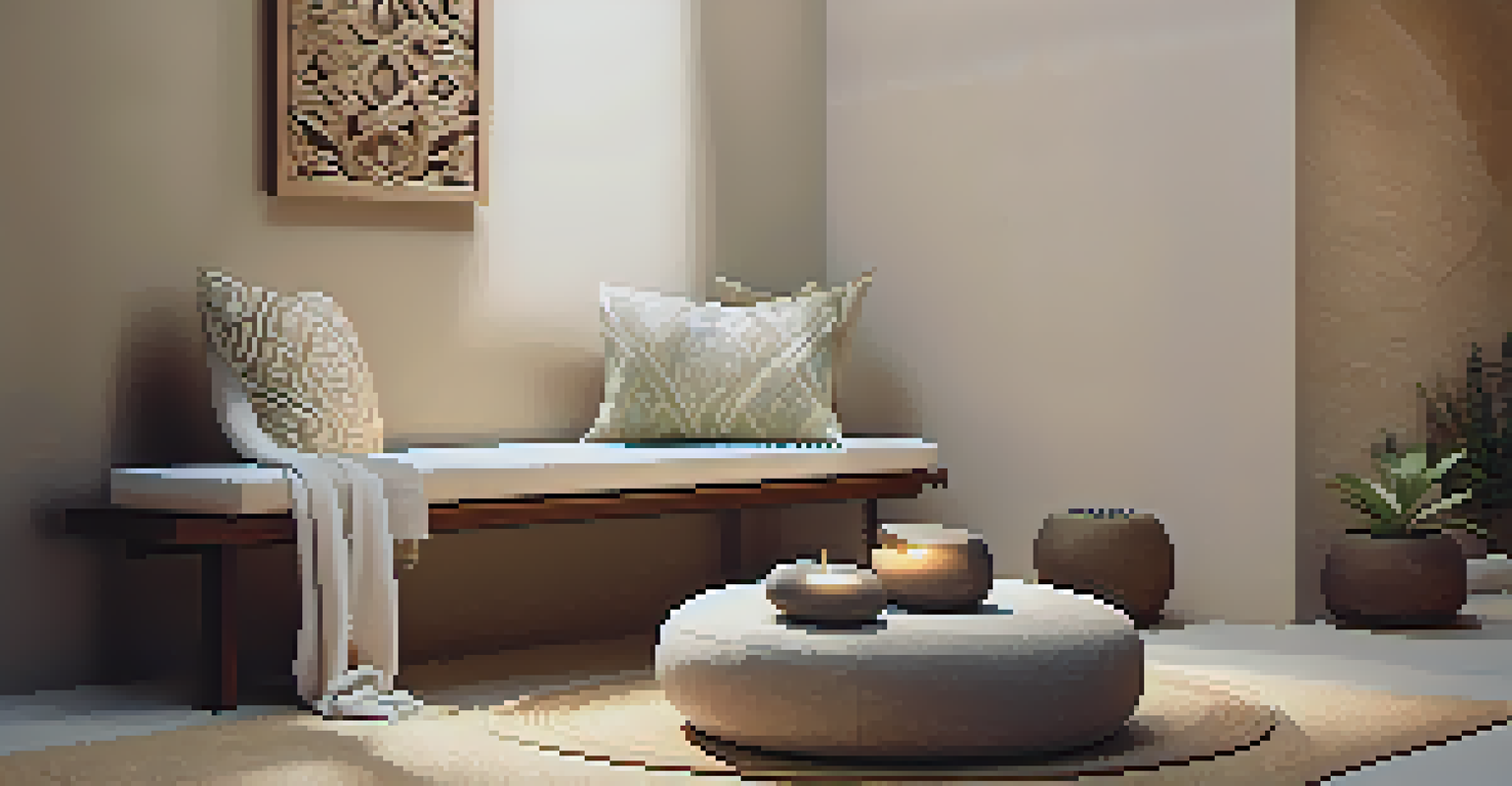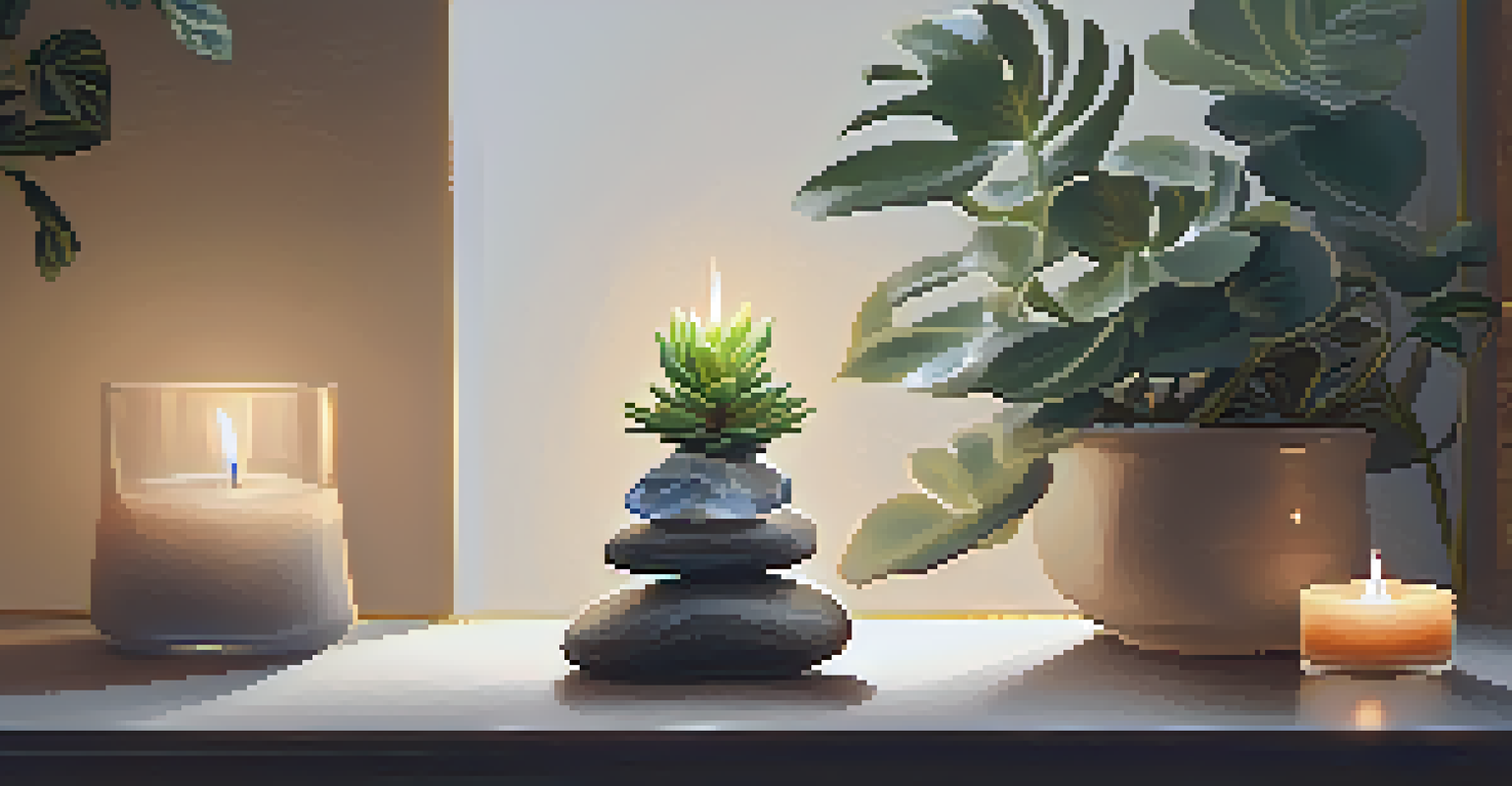How to Create a Mindfulness Space at Home for Clarity

Understanding the Importance of a Mindfulness Space
Creating a mindfulness space at home can be a game-changer for your mental clarity. In our fast-paced lives, we often overlook the need for a dedicated area to pause and reflect. This space isn't just about physical location—it's about fostering a mindset that encourages peace and tranquility.
The mind is everything. What you think you become.
Imagine having a little corner in your home where you can escape from the chaos. It’s a sanctuary where you can breathe, meditate, or simply sit in silence. By designating this space, you signal to your mind that it’s time to slow down and focus on the present moment.
With a mindfulness space, you're setting the stage for clearer thinking and emotional balance. It becomes a powerful tool in your wellness journey, allowing you to reconnect with yourself amidst daily distractions.
Choosing the Right Location for Your Mindfulness Space
The first step in creating your mindfulness space is choosing the right location. Look for a quiet area in your home where you can minimize distractions—perhaps a spare room, a cozy nook by a window, or even a corner of your bedroom. The key is to find a spot that feels serene and inviting.

Consider the natural light in your chosen area. Sunlight has a calming effect and can enhance your mood, making it easier to focus. If possible, position your mindfulness space near a window so you can enjoy the beauty of nature while you practice mindfulness.
Create Your Mindfulness Sanctuary
Designate a quiet, calming space in your home to enhance your mental clarity and emotional balance.
Lastly, think about the ambiance of the space. It should be a place that feels good to you—where you can unwind and let go of the day's stress. Trust your instincts when selecting a location; your intuition often knows best!
Selecting Calming Colors and Decor for Your Space
Color plays a significant role in setting the mood for your mindfulness space. Soft, muted tones like blues, greens, and earth tones can evoke feelings of calm and relaxation. Avoid bright or overly stimulating colors that might distract you from your mindfulness practice.
Mindfulness isn't difficult. We just need to remember to do it.
Incorporate decor that inspires tranquility. Consider adding items like plants, which not only purify the air but also bring a sense of life into the space. Artwork that resonates with peace, such as landscapes or abstract pieces in soothing colors, can also enhance the atmosphere.
Finally, personal touches matter. Whether it's a cozy blanket, a favorite book, or meaningful mementos, surrounding yourself with items that bring you joy can make your mindfulness space feel uniquely yours.
Incorporating Comfortable Seating for Relaxation
Comfort is crucial when it comes to mindfulness practice, so be sure to select seating that encourages relaxation. A plush cushion, a soft armchair, or even a meditation bench can be great choices. The idea is to create a space where you can settle in comfortably without distractions.
Make sure your seating choice supports good posture, especially if you plan to spend extended periods in your mindfulness space. A comfortable position can enhance your ability to focus and engage in deeper mindfulness practices, like meditation or deep breathing.
Incorporate Nature and Comfort
Use elements like plants and comfortable seating to promote relaxation and a connection to nature.
Additionally, consider layering your seating with soft throws or pillows for added comfort. This small touch can make your mindfulness spot feel cozier and more inviting, encouraging you to spend time there regularly.
Adding Elements of Nature to Your Space
Bringing elements of nature into your mindfulness space can significantly enhance its calming effect. Plants, stones, and water features create a sensory experience that promotes relaxation. A small indoor fountain, for instance, can provide soothing sounds that drown out distractions.
Plants not only improve air quality but also have a grounding effect. Consider easy-care plants like succulents or peace lilies, which thrive indoors and require minimal maintenance. Their presence can remind you of the beauty of nature, even when you're indoors.
You might also want to incorporate natural materials into your decor, such as wood, stone, or bamboo. These elements can create a warm and inviting atmosphere, anchoring your mindfulness practice in a sense of tranquility.
Creating a Distraction-Free Environment
To truly benefit from your mindfulness space, minimizing distractions is essential. Start by decluttering the area; a tidy space can lead to a clear mind. Remove any items that don't serve a purpose in your mindfulness practice to create a more focused environment.
Consider using soft lighting to create a calming ambiance, such as lamps with warm bulbs or candles. Bright, harsh lighting can be overstimulating, while softer light encourages relaxation and focus. If you love natural light, try using sheer curtains to diffuse sunlight gently.
Establish a Consistent Routine
Set aside dedicated time each day for mindfulness practice to cultivate a habit that fosters peace and clarity.
Additionally, keep electronics to a minimum in your mindfulness space. If possible, leave your phone and other devices in another room to avoid interruptions. This helps you fully immerse yourself in the practice, fostering clarity and peace.
Incorporating Mindfulness Tools and Resources
To enhance your mindfulness practice, consider incorporating tools and resources that resonate with you. Journals, guided meditation apps, or books on mindfulness can provide guidance and inspiration. Having these resources readily available in your space can motivate you to engage in mindfulness regularly.
You might also want to include items like essential oils or crystals, which many find helpful for relaxation. Scents like lavender or chamomile can create a calming atmosphere, while crystals like amethyst are believed to promote tranquility and peace.

Creating a small altar or display with these items can further personalize your space. This not only enhances the environment but also serves as a visual reminder of your commitment to mindfulness and clarity.
Establishing a Routine for Mindfulness Practice
Once your mindfulness space is set up, the next step is to establish a routine that encourages regular practice. Schedule time each day to visit your space—whether it's morning meditation, evening reflection, or a midday pause. Consistency is key to reaping the benefits of your mindfulness practice.
Start by setting small, achievable goals. Even just five minutes of mindfulness can make a difference in how you feel. As you become more comfortable, you can gradually increase the time you spend in your mindfulness space.
Finally, be gentle with yourself. Mindfulness is about progress, not perfection. Embrace the journey and allow your practice to evolve over time, knowing that each moment spent in your mindfulness space is a step toward greater clarity and peace.